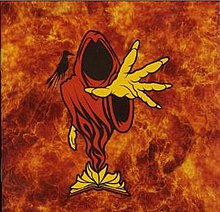The Wraith: Hell's Pit
| The Wraith: Hell's Pit | ||||
|---|---|---|---|---|
 |
||||
| Studio album by Insane Clown Posse | ||||
| Released | August 31, 2004 | |||
| Recorded | 2003–2004 | |||
| Genre | Midwest hip hop, indie hip hop, Horrorcore | |||
| Length | 64:28 | |||
| Label | Psychopathic Records | |||
| Producer |
ICP Mike Puwal |
|||
| Insane Clown Posse chronology | ||||
|
||||
| The Wraith: Hell's Pit | ||||

Outer cardboard slip cover.
|
||||
| Professional ratings | |
|---|---|
| Review scores | |
| Source | Rating |
| Allmusic | |
| RapReviews.com | |
The Wraith: Hell's Pit is the ninth studio album by Insane Clown Posse. Released on August 31, 2004, the album is the final chapter of the Joker's Card series. It is the second album for the 6th Joker Card in the 1st deck, and the group's 19th overall release.
Following the release of The Wraith: Shangri-La, group member Violent J admitted that he was considering not completing the production of Hell's Pit. He is quoted as describing Shangri-La as "the end of the road. It's the end of the Joker's Cards. After this I could do anything I want, for the rest of my life. The positivity was so unbelievable."
Preceding the release of Hell's Pit, Bruce stated the album's sound was intended as a throwback to the minimalistic sound of Carnival of Carnage, particularly its darker second half. Bruce also stated that it would contain less rock elements and singing, and that it would not feature guest appearances. "Bowling Balls" samples the drum beat of Madonna's "Justify My Love," which was based upon Public Enemy's instrumental "Security of the First World", which was in turn based on the end drum break of James Brown's "Funky Drummer".
Hell's Pit is the second part of the sixth Joker's Card, The Wraith, written with the opposite intent of its counterpart, Shangri-La, Hell's Pit is intended to illustrate the horrors of hell itself. Many of the songs feature Violent J and Shaggy 2 Dope fictitiously dying, to be sent to Hell, depicted in the album as a place void of all hope and peace, where those who do not atone for their sins and follow the ways of Shangri-La will presumably be sent upon their death. Bruce described the album as "Horror tale after Horror tale, mixed in with songs that describe hell" and stated that it was the darkest, most painful work he had ever done.
...
Wikipedia
